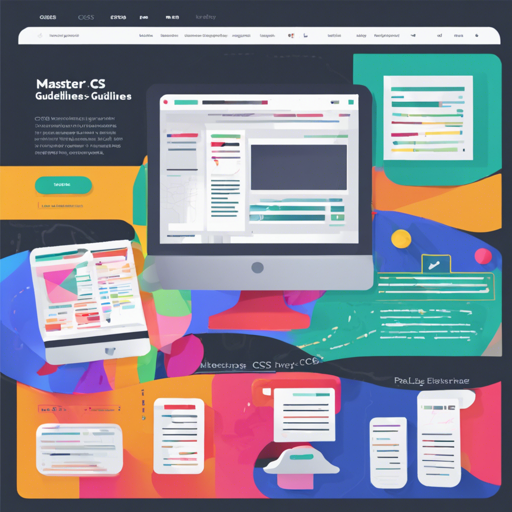Welcome to the world of CSS guidelines! Whether you’re a novice trying to get your bearings or an experienced developer looking to refine your skills, these guidelines will help you create maintainable, scalable, and beautiful styles. Let’s dive deep into each section and discover how to write tidy CSS that everyone on your team will appreciate.
Terminology and Conventions Used in These Guidelines
- Sass variable: This represents a setting in the form of a variable.
- Ellipsis (…): This signifies a placeholder for code in examples.
- Team-oriented: The guidelines are tailored keeping a team environment in mind.
General Principles
Writing code isn’t solely about clarity—it’s about clarity for others as well. Think of it as crafting a letter to a friend; you wouldn’t want to confuse them with your handwriting or your language choices. The likelihood that many developers may interact with your code means maintaining a clear structure is paramount. Here’s how you can ensure clarity:
- Consistent syntax.
- Meaningful commenting.
- Consistent naming conventions.
Acknowledgements and Credit
These guidelines owe much of their foundation to the invaluable resources shared by experts, especially the excellent works of Harry Roberts. It’s crucial to learn from those who’ve paved the way before us.
Syntax and Formatting
When writing CSS, think of the rules as the foundation of a well-structured building. If the foundation is flawed, the entire structure can become unstable. Here are the basic rules to keep in mind:
- Always use four-space indents, and avoid using tabs.
- Limit line width to 80 characters for better readability.
- Utilize meaningful whitespace.
.selector-1,
.selector-2 {
background-color: $color-brand;
display: block;
color: $color-text-base;
}
Consider this CSS ruleset our architectural blueprint. Just like an architect carefully lays out each room, ensuring everything is logically arranged, here we organize each selector and declaration for clarity. For instance, separating each selector onto its own line brings immediate clarity as it makes the code easier to read and maintain over time.
Commenting
Think of comments as your CSS’s internal narrative. They serve to clarify the reasoning behind certain styles or the design patterns being used. Here’s how to effectively comment your CSS:
- Place comments above the segment they describe.
- Maintain a sensible line length—ideally under 80 columns.
- Create meaningful breaks with your comments.
DocBlock-*esque* Style Comments
Utilizing a DocBlock-style comment looks something like this:
/**
* A brief overview of this component.
*
* @markup
* ...
*/
Naming Conventions
Consistent naming is the cornerstone of legible code. Think of naming conventions as the labels you place on storage boxes. Just as each box should clearly indicate its contents, your classes, variables, and selectors should communicate their purpose at a glance. Here’s how to name things effectively:
- Utilize lowercase letters for all instructions.
- Apply BEM-like naming conventions for your classes to maintain readability.
- For other entities, stick to a hyphen-delimited style.
Tooling
To streamline the application of these guidelines, tool interventions can be immensely helpful. Consider implementing linting tools such as stylelint, which will automatically handle many of the syntax rules for you.
Text Editor Configuration
Configuring your text editor properly can significantly enhance your workflow. Here’s a snippet you may want to set in Sublime Text for optimal CSS writing:
{
"tab_size": 4,
"translate_tabs_to_spaces": true,
"trim_automatic_white_space": true,
"trim_trailing_white_space_on_save": true,
"word_wrap": true,
"wrap_width": 80
}
Troubleshooting
If you encounter issues while implementing these guidelines, consider the following:
- Check your text editor settings to ensure you’re following the spacing rules.
- Make sure your linting tools are correctly set up to identify any syntax issues.
- If issues persist, revisit the guidelines to ensure you haven’t missed a key rule.
For more insights, updates, or to collaborate on AI development projects, stay connected with fxis.ai.
Conclusion
By adhering to these CSS guidelines, you’ll be ensuring your code is clear, maintainable, and respectful to other developers. As a result, each stylesheet becomes more than just a collection of properties—it turns into a well-organized manual that others can follow. At fxis.ai, we believe that such advancements are crucial for the future of AI, as they enable more comprehensive and effective solutions. Our team is continually exploring new methodologies to push the envelope in artificial intelligence, ensuring that our clients benefit from the latest technological innovations.

